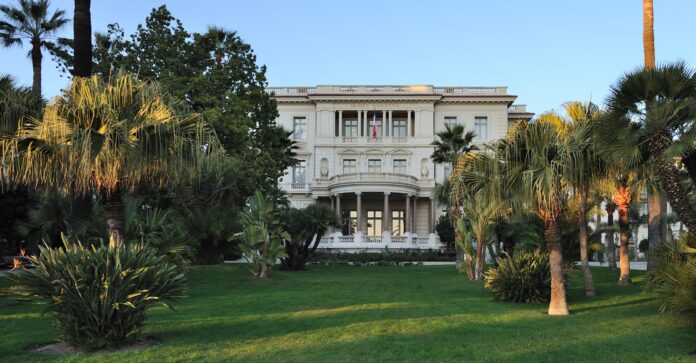The Ministry of Culture has officially classified Villa Massena as a historical monument. This decision enhances the recognition of Nice’s heritage and ensures strengthened protection for this emblematic site.
Villa Massena is now classified as a historical monument. This classification, announced by the Minister of Culture Rachida Dati, marks a new stage for this residence built between 1898 and 1901 on the Promenade des Anglais in Nice.
The Danish architect Hans-Georg Tersling, a significant figure of the Belle Époque, was the designer. Commissioned by Victor Masséna, Duke of Rivoli and Prince of Essling, the villa is inspired by Italian models with its loggias, galleries open to the garden, and sea views. The remarkable garden, classified last month, was designed by renowned landscape architect Édouard André.
Donated to the city of Nice in 1917, in the midst of World War I, the villa became a museum in 1921. It now houses collections related to the history of Nice from the 19th century to the Belle Époque.
Christian Estrosi, Mayor of Nice, welcomes this recognition: “This recognition, which we have been eagerly awaiting, highlights the importance of this emblematic site in the history of our city. […] It serves as an essential place of memory, carrying a precious history that we must preserve and pass on to future generations.”
The classification will notably allow for state support for potential restorations and easier access to public funding.
Besides its museum role, Villa Massena also hosts official receptions. Its salon has seen heads of state, artists, and historians. Since 2016, its garden has housed a memorial in tribute to the 86 victims of the July 14 attack.
Today, the villa remains a vibrant place. It embodies the link between past and present, between private memory and shared heritage. It is open to all, in a city that continues to bring its history to life.


